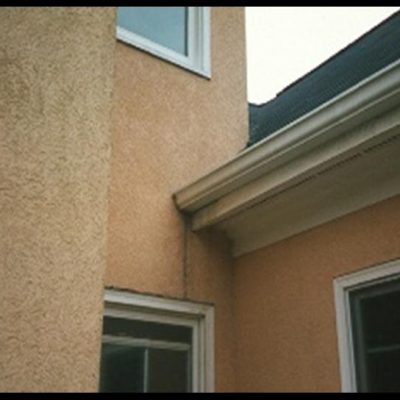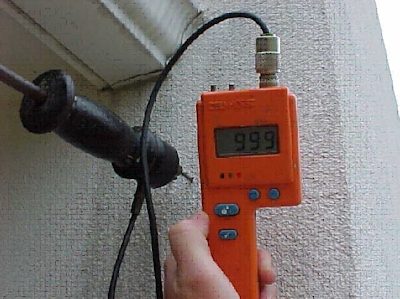Installation in and around the Greater Charlotte Lake Norman NC region.
Barrier EIFS is comprised of a base coat and finish coat applied over an EPS board that is attached directly to the sheathing using fasteners or an adhesive. The system provides no avenue for water to drain out once it penetrates behind the EPS board. Traditional stucco, on the other hand, is applied over a wire mesh, and installed with standoffs that allow space behind the stucco for “weeping” of water. No EPS or Styrofoam board is used in a traditional stucco exterior.
EIFS or traditional stucco?
There are a few simple tests that any homeowner can perform to determine whether he or she has EIFS or traditional stucco.
The Knock Test
Go outside and knock on an outer “stucco” wall of your home. If it sounds hollow, there is a good chance you have EIFS. If it feels like you are knocking on a brick wall, it is more likely that you are knocking on traditional “hard-coat” stucco.
The Gap Test
Put your hand under the bottom edge of the cladding near the foundation, assuming that is possible (another common installation error occurs when the EIFS is installed below grade, making this test difficult if not impossible). If you can feel that the cladding comes out away from the foundation 3/4 of an inch or more, chances are you have an EIFS cladding. This is because the EPS board used in EIFS makes the system extend farther away from the wall than a traditional stucco system.
The Penetration Test
Inspect some of the penetrations in the stucco. Since most installers of EIFS do not create the proper joints around penetrations such as light fixtures, gutter straps, or doorbell/intercom devices, remove these items and check for the telltale foam board used in EIFS. If you see the Styrofoam-like board, you have EIFS. Traditional stucco exteriors do not use this element.
Still Not Sure?
If you still are not sure what type of cladding you have, or you have any other questions, you should contact us at 704-584-9180.







Recent Comments